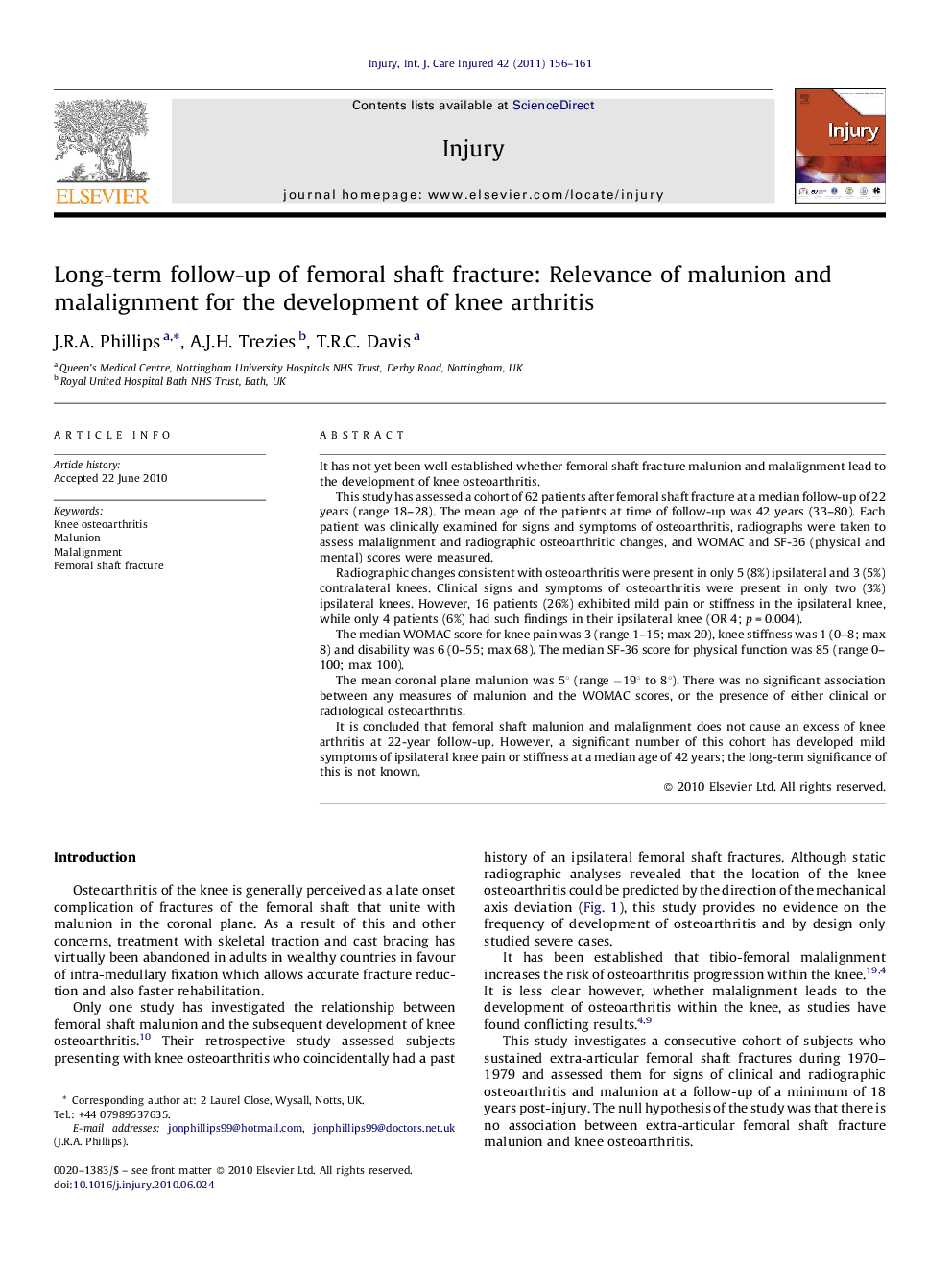| Article ID | Journal | Published Year | Pages | File Type |
|---|---|---|---|---|
| 3241196 | Injury | 2011 | 6 Pages |
It has not yet been well established whether femoral shaft fracture malunion and malalignment lead to the development of knee osteoarthritis.This study has assessed a cohort of 62 patients after femoral shaft fracture at a median follow-up of 22 years (range 18–28). The mean age of the patients at time of follow-up was 42 years (33–80). Each patient was clinically examined for signs and symptoms of osteoarthritis, radiographs were taken to assess malalignment and radiographic osteoarthritic changes, and WOMAC and SF-36 (physical and mental) scores were measured.Radiographic changes consistent with osteoarthritis were present in only 5 (8%) ipsilateral and 3 (5%) contralateral knees. Clinical signs and symptoms of osteoarthritis were present in only two (3%) ipsilateral knees. However, 16 patients (26%) exhibited mild pain or stiffness in the ipsilateral knee, while only 4 patients (6%) had such findings in their ipsilateral knee (OR 4; p = 0.004).The median WOMAC score for knee pain was 3 (range 1–15; max 20), knee stiffness was 1 (0–8; max 8) and disability was 6 (0–55; max 68). The median SF-36 score for physical function was 85 (range 0–100; max 100).The mean coronal plane malunion was 5° (range −19° to 8°). There was no significant association between any measures of malunion and the WOMAC scores, or the presence of either clinical or radiological osteoarthritis.It is concluded that femoral shaft malunion and malalignment does not cause an excess of knee arthritis at 22-year follow-up. However, a significant number of this cohort has developed mild symptoms of ipsilateral knee pain or stiffness at a median age of 42 years; the long-term significance of this is not known.
